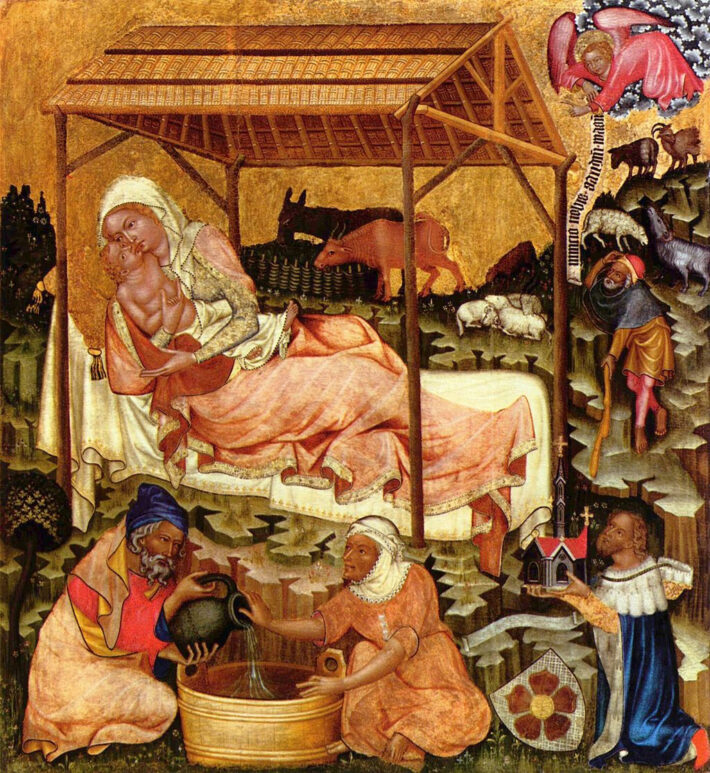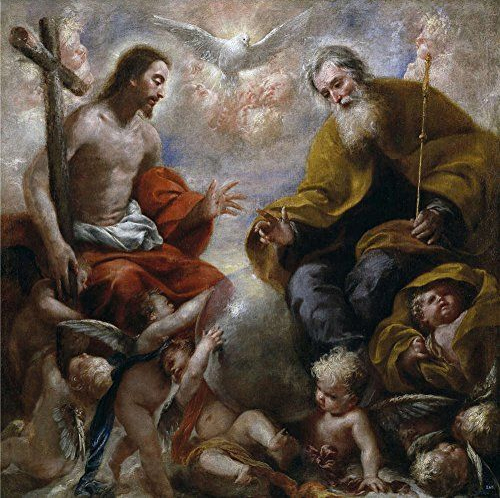What Is The Truth Of The Story Of Mary And Jesus? | Virgin Mary God The Son
The story of Jesus’ birth in Bethlehem, as recorded in the New Testament’s Gospel of Luke, is a central event in Christian belief and is an important part of the Christmas holiday. According to this account, Jesus was born to a virgin named Mary, who was betrothed to a man named Joseph. Mary and Joseph lived in Nazareth, but they were required to travel to Bethlehem for a census. While in Bethlehem, Mary gave birth to Jesus in a stable, because there was no room for them in the inn.
The story of Jesus’ birth in Bethlehem is a religious belief. It is not mentioned in any other historical or contemporary sources. Some scholars believe that the story of Jesus’ birth in Bethlehem may be a legend or a myth, rather than a historically accurate account of events. It is possible that the story was influenced by earlier stories or legends, or that it was created as a way to fulfill a prophecy or to provide a symbolic foundation for the Christian faith.
Give Examples Of Earlier Stories Or Legends
There are a number of stories and legends from ancient mythology that share similarities with the story of Jesus’ birth in Bethlehem. These include tales of gods or demigods who were born of virgins, or who were born in unusual or miraculous circumstances.
For example, in ancient Greek mythology, the god Zeus was born of a virgin named Metis, who was impregnated by the god’s father, Cronus, in the form of a shower of gold. Similarly, in ancient Egyptian mythology, the god Horus was born of a virgin named Isis, who conceived him through magical means.
There are also stories from ancient mythology of heroes or leaders who were born in humble or unusual circumstances, and who were later recognized as divine or special in some way. For example, in ancient Roman mythology, the god Romulus was born of a virgin named Rhea Silvia, who was impregnated by the god Mars. Romulus and his twin brother Remus were abandoned as infants and left to die, but they were rescued and raised by a she-wolf, and later became the founders of Rome.
In ancient Greek mythology, the god Dionysus was born of a virgin named Semele, who was impregnated by the god’s father, Zeus, in the form of a thunderbolt. Dionysus was later recognized as a god of wine, fertility, and rebirth.
In ancient Roman mythology, the god Mithras was born of a virgin on December 25th, and was later recognized as a savior and mediator between humanity and the divine.
In ancient Hindu mythology, the god Krishna was born of a virgin named Devaki, who was impregnated by the god’s father, Vasudeva, through divine intervention. Krishna was later recognized as a god of love, compassion, and wisdom.
In ancient Persian mythology, the god Mithra was born of a virgin on December 25th, and was later recognized as a savior and mediator between humanity and the divine.
In ancient Maya mythology, the god Quetzalcoatl was born of a virgin named Chimalman, who was impregnated by the god’s father, Coatlicue, through divine intervention. Quetzalcoatl was later recognized as a god of wisdom, knowledge, and creativity.
Legend, Myth, And Earlier Stories: Exploring The Roots Of The Story Of Jesus’ Birth In Bethlehem
The story of Jesus’ birth in Bethlehem, as recorded in the New Testament’s Gospel of Luke, is a central event in Christian belief and is an important part of the Christmas holiday. According to this account, Jesus was born to a virgin named Mary, who was betrothed to a man named Joseph. Mary and Joseph lived in Nazareth, but they were required to travel to Bethlehem for a census. While in Bethlehem, Mary gave birth to Jesus in a stable, because there was no room for them in the inn.
One example of a story from ancient mythology that shares similarities with the story of Jesus’ birth in Bethlehem is the tale of Dionysus, the Greek god of wine, fertility, and rebirth. According to Greek mythology, Dionysus was born of a virgin named Semele, who was impregnated by the god’s father, Zeus, in the form of a thunderbolt. Dionysus was later recognized as a god, and his cult was widely worshipped throughout the ancient world.
Another example is the story of Mithras, the Roman god of truth, honor, and the sun. According to Roman mythology, Mithras was born of a virgin on December 25th, and was later recognized as a savior and mediator between humanity and the divine. The cult of Mithras was popular among Roman soldiers and merchants, and it spread throughout the Roman Empire.
How Did God Prepare The World To Know Jesus
In Hindu mythology, the god Krishna is another example of a divine figure who was born of a virgin. According to Hindu tradition, Krishna was born of a virgin named Devaki, who was impregnated by the god’s father, Vasudeva, through divine intervention. Krishna was later recognized as a god of love, compassion, and wisdom, and his teachings and stories continue to be an important part of Hinduism today.
In ancient Persian mythology, the god Mithra was born of a virgin on December 25th, and was later recognized as a savior and mediator between humanity and the divine. The cult of Mithra spread throughout the Persian Empire and beyond, and it was popular among soldiers and merchants.
In ancient Maya mythology, the god Quetzalcoatl was born of a virgin named Chimalman, who was impregnated by the god’s father, Coatlicue, through divine intervention. Quetzalcoatl was later recognized as a god of wisdom, knowledge, and creativity, and his cult was widely worshipped in ancient Mesoamerica.
In ancient Egyptian mythology, the god Horus was born of a virgin named Isis, who conceived him through magical means. Horus was later recognized as a god of the sky, the sun, and kingship, and his cult was widely worshipped throughout ancient Egypt.
In ancient Celtic mythology, the hero Cu Chulainn was born of a virgin named Deichtine, who was impregnated by the god Lugh through divine intervention. Cu Chulainn was later recognized as a great warrior and hero, and his stories and legends continue to be an important part of Irish mythology and folklore.
Summarize Virgin Birth In The Ancient World
The concept of a virgin birth, or the idea that a woman can become pregnant and give birth without having sexual intercourse, appears in various myths and legends from ancient cultures around the world. The virgin birth is often associated with divine or supernatural intervention, and it is often used to explain the unusual or miraculous circumstances of a person’s birth.
In ancient Greek mythology, for example, the gods Zeus and Dionysus were both born of virgins. Zeus was born of a virgin named Metis, who was impregnated by the god’s father, Cronus, in the form of a shower of gold. Dionysus was born of a virgin named Semele, who was impregnated by the god’s father, Zeus, in the form of a thunderbolt.
In ancient Roman mythology, the god Mithras was also believed to have been born of a virgin. In Hindu mythology, the god Krishna was born of a virgin named Devaki, who was impregnated by the god’s father, Vasudeva, through divine intervention.
The concept of the virgin birth is also found in ancient Egyptian mythology, where the god Horus was born of a virgin named Isis, and in ancient Maya mythology, where the god Quetzalcoatl was born of a virgin named Chimalman. In ancient Celtic mythology, the hero Cu Chulainn was born of a virgin named Deichtine.
Mary And Jesus | Virgin Birth | The Rosary
The story of Jesus’ birth in Bethlehem, as recorded in the New Testament’s Gospel of Luke, is another example of a virgin birth. According to this account, Jesus was born to a virgin named Mary, who was betrothed to a man named Joseph. Mary and Joseph lived in Nazareth, but they were required to travel to Bethlehem for a census. While in Bethlehem, Mary gave birth to Jesus in a stable, because there was no room for them in the inn.
The concept of the virgin birth has played a significant role in various religious traditions throughout history, and it continues to be a central belief in some contemporary faiths. In Christianity, the belief in the virgin birth of Jesus is based on the accounts recorded in the New Testament’s Gospel of Luke and is an important part of Christian doctrine.
However, it is important to recognize that the concept of the virgin birth is a religious belief, and it should not be taken as a historically or scientifically accurate account of events. There is no independent historical evidence to verify the details of the virgin birth stories, and they should be understood within the cultural and religious context in which they were created.
In addition to its religious significance, the concept of the virgin birth has also inspired artistic and cultural expressions. The virgin birth of Jesus has been depicted in countless works of art, literature, and music throughout history, and it continues to be a popular theme in contemporary media.
Despite its enduring popularity, the concept of the virgin birth has also been the subject of much debate and criticism. Some people have questioned the historical accuracy of the virgin birth stories, and others have raised concerns about the way in which the concept of the virgin birth has been used to justify certain beliefs or practices.
The virgin birth is a complex and multifaceted idea that has had a significant impact on human culture and belief throughout history. It continues to be a source of inspiration, fascination, and debate for people around the world.






